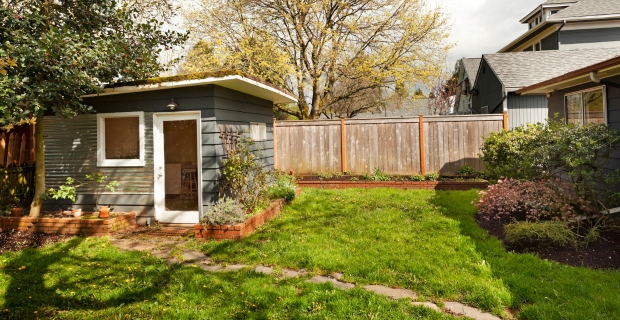Date Published: 2024/09/02
Read Time: mins
Are Detached Structures Covered Under Home Insurance? What You Need to Know

Are you a homeowner wondering whether your gazebo, shed, or detached garage is covered under your home insurance policy? You're not alone. Many homeowners have detached structures on their properties and are unsure about their coverage. This article will clarify what detached structures are and guide you through everything you need to know to ensure they are properly insured.
Understanding Detached Structures
Detached structures are any permanent buildings on your property that are not physically attached to your main dwelling, such as your house. These can include anything from garages and sheds to gazebos and pool houses. Essentially, if there's clear space between your house and the structure, it's considered a detached structure.
Common Types of Detached Structures Include:
- Garage
- Shed
- Gazebo
- Fence
- Detached patio
- Pool house or cabana
- Greenhouse
- Guest house(s)
- Mailbox
- Backyard or walkway
How Coverage Works for Detached Structures
Most standard home insurance policies include coverage for detached structures separate from your primary dwelling. Many policies refer to this coverage as Coverage B, which helps protect detached structures on your property against risks such as:
- Fire
- Theft
- Vandalism
- Severe weather events
Typically, your detached structures are covered at a limit of 10% of your dwelling coverage. For example, if your home is insured for $400,000, your detached structures would be covered up to $40,000. You may need additional coverage if the value of your detached structures exceeds the standard limit. Depending on your insurance provider, you can increase your coverage limit or add endorsements to tailor your policy to your specific needs.
It’s important to inform your insurance broker of any detached structures on your property to ensure you have proper coverage. Your broker can help determine the right amount of coverage based on the type, size, and use of the structure.
Regularly Review Your Policy
Review your home insurance policy regularly to ensure it still meets your needs. If you've added new detached structures or made significant changes to existing ones, update your policy accordingly.
Tips for Ensuring Proper Coverage for Detached Structures
Ensuring your detached structures are adequately covered requires proactive steps. Here are some tips to help you get started:
1. Work with an insurance broker
An insurance broker can provide personalized advice and help you find the best coverage for your detached structures. They can compare different policies and recommend the most suitable option for you.
2. Document your structures and contents
Maintain an inventory of your detached structures and the items stored in them. This list will be an important resource if you need to file a claim. Include photos, videos, and receipts for high-value items.
3. Assess the need for additional coverage
Consider the unique risks associated with your detached structures. For example, if you have a high-value item stored in your garage, you may need additional coverage to protect it. Speak with your broker about scheduling higher-value items or increasing your coverage limits as needed.
Detached structures add significant value and utility to your property. Understanding what qualifies as a detached structure, how coverage works, and the options available can help you make informed decisions to ensure you have the coverage you need.
If you’re shopping for home insurance, you can request a free quote and one of our Orbit insurance brokers will contact you. Our team of experts is here to help you find the right coverage for you and ensure your property is fully protected.
If you're a current Orbit customer and have questions about your home insurance policy, contact an insurance broker today.